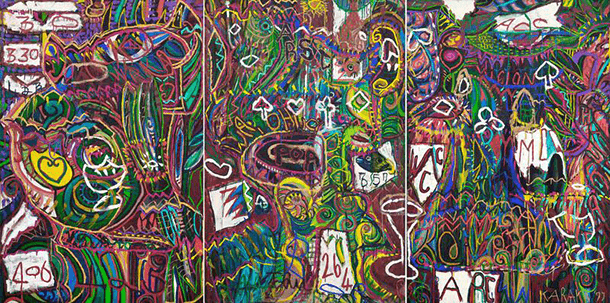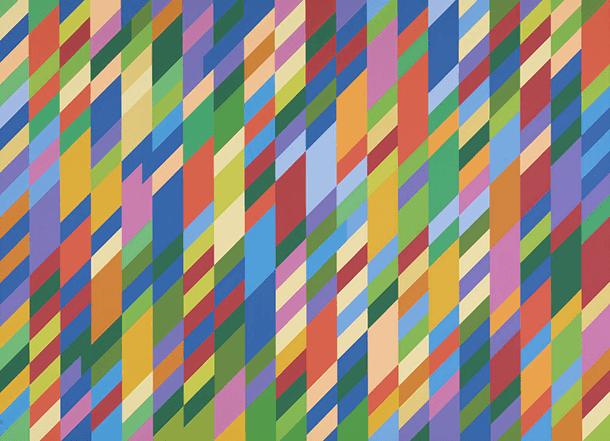Identity and Diversity in Art History
"Art is nothing if you don’t reach every segment of the people."
(Keith Haring, American Pop artist)
Until the late-20th and early-21st Centuries, the History of Art focused scholarly attention primarily on white, male, heterosexual artists. Consequently, the stories of innumerable artists across a spectrum of backgrounds were overlooked, erased, or forgotten. More efforts have been taken to expand the scope of who is included in the History of Art canon as art historians, art critics, and curators utilize their positions to transform the discipline into a more inclusive field of study. “Identity and Diversity” is a Special Collection that features the works of painters, illustrators, and printmakers who comprise an exceptionally diverse range of cultural identities. The collection will be divided into three main subsections that highlight the artistic contributions of Women Artists, Artists of Colour, and LGBTQ+ Artists. As a way to introduce today’s viewers to a rich selection of creative figures, this continually growing collection will represent diverse artists across all major and minor art movements, styles, and historical periods: from Dutch Baroque still-life painter Clara Peeters and African-American portraitist Joshua Johnson, to gay British-Jewish Pre-Raphaelite painter Simeon Solomon and Contemporary South Korean artist Myonghi Kang.
Curated and edited by Liam Otero
Women Artists
"... everything was controlled by men, not just art."
(Carmen Herrera, Cuban-American abstract painter)
Women artists have been actively involved in artistic production for the entirety of human history. However, much of the History of Art has failed to acknowledge female artists' considerable influence and massive presence throughout world cultures. Instead, they have been sidelined, forgotten, or ignored from public and academic discussions. Additionally, women artists themselves have been subjected to discouragement, harsh criticism, and plagiarism by figures both within and outside of the Art World, be it Andy Warhol’s copies of Yayoi Kusama’s Infinity Rooms or Louise Bourgeois’s painful childhood abuse at the hands of her father.
The feminist Art Historian Linda Nochlin wrote an influential essay in 1971, "Why Have There Been No Great Women Artists?”, in which she criticizes the historical suppression and exclusion of female artists from the History of Art and museum spaces, and she simultaneously addresses issues relating to racism and classism in the field. This text was profoundly influential in reshaping the Art History canon to openly study, promote, and curate works by women of all backgrounds. Over 50 years after its publication, there has been increased interest in the works of female artists across all art periods and mediums, and there has been a rising effort to diversify the representation of female artists from myriad sexual orientations, nationalities & ethnicities, and religious identities. Entire museums and gallery collections have been organized to trace the history and current trends in art produced by women as seen in the permanent and special exhibitions of The Brooklyn Museum's Elizabeth A. Sackler Center for Feminist Art and the National Museum of Women in the Arts in Washington, D.C.
There is no single period of art devoid of women, as evidenced by the number of names associated with countless movements and styles, from Mary Cassatt and Impressionism to Frida Kahlo and Surrealism. Contextually, women artists have been active producers in the exact same art markets as their male contemporaries, be it the Swiss Neoclassical painter Angelica Kauffman’s mythological compositions in the 18th Century or the American Modernist Georgia O’Keeffe’s abstract paintings throughout the 20th Century. Female art collectives and progressively inclusive groups have and continue to foster fruitful developments in artistic production and inspire future generations of women artists: Pattern & Decoration, The Guerilla Girls, The Bettys, etc.
The objective of this permanent collection is to increase public exposure to women artists, both established Art Historical icons like Artemisia Gentileschi and Clara Peeters to recently discovered and emerging figures such as Loie Hollowell and Myonghi Kang. In keeping with USEUM’s objectives, all of the women artists will represent every world culture, art movement, and style to demonstrate the breadth and scope of women and their role in the History of Art.
Text by Liam Otero

